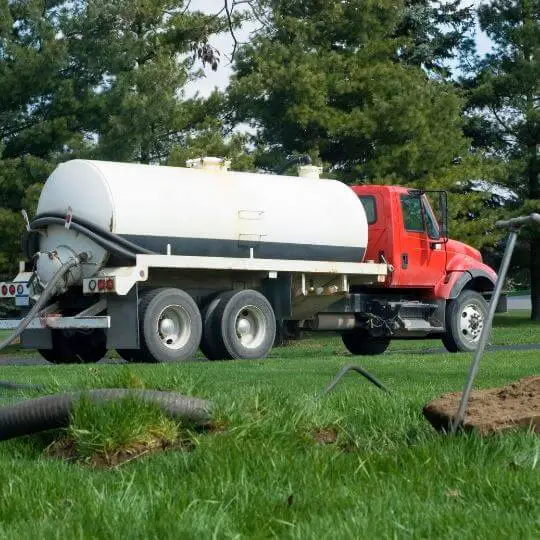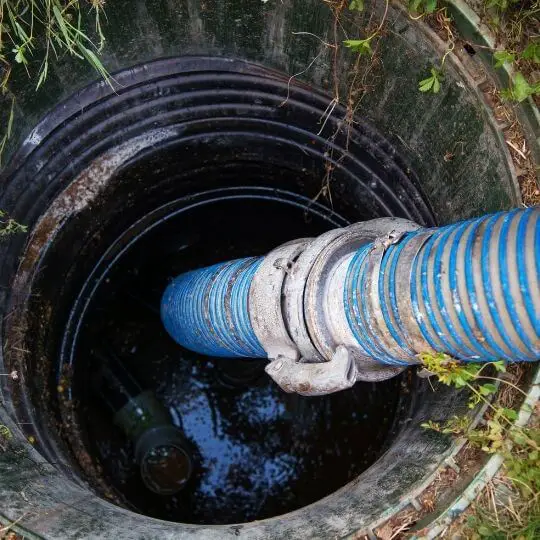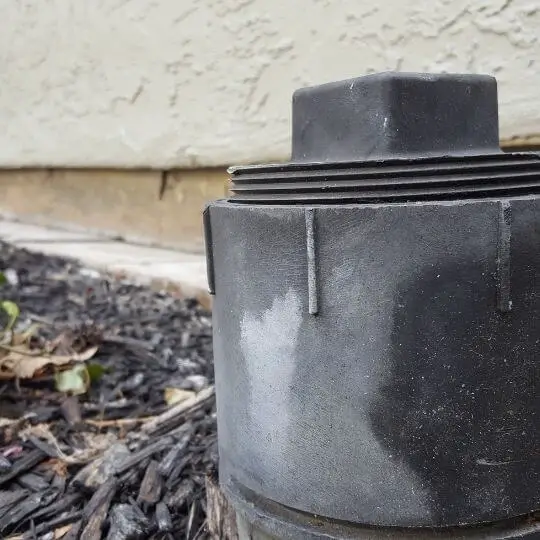Either intentionally or by a twist of fate, many things can end up down your drain that shouldn’t be there. Things as children’s toys, feminine hygiene products, hair, and too much toilet paper can easily create a clog. In these types of situations, it’s very beneficial to have a plumbing cleanout in your home. Stick around to learn more about types of plumbing cleanouts, their benefits, and ways to locate them.
What Are Plumbing Cleanouts?

Generally, when you hear plumbers mentioning plumbing cleanouts, they are referring to the access to the main sewer line.
All the water waste from tubs, sinks, and toilets in your house flows down the drain and piping fixtures. It then flows and collects in one vertical pipe called a stack pipe. [1]
Then, all that waste goes into your main building/home sewer line. This home sewer is connected to the main public sewer.
Now, when clogs appear inside the main sewer underneath your home, it can be difficult to gain access to them. This is why plumbing cleanouts exist!
Plumbing cleanouts provide the access point for homeowners or plumbers to check and/or clean the pipe.
Typically, a home usually has one or more plumbing cleanouts, located inside and/or outside of the house. However, some older plumbing systems may lack a cleanout entirely, as it wasn’t originally installed.
A plumbing cleanout looks like a capped pipe that is sticking a few inches above the ground. In some situations, it can be covered by soil, and therefore not as easy to find.
A plumbing cleanout usually goes unnoticed, until a huge clog arises that blocks your main drain line.
Nevertheless, it can be useful to do yearly maintenance as there are companies specialized in cleaning the main drain blockage. This is especially important if you live in a wooded area, as tree roots can damage and/or block the main sewer line.
Different Types Of Plumbing Cleanouts

The main division comes down to the place where plumbing cleanouts are placed and attached. They can be found inside of your home, outside, or both.
- Drain Cleanouts Indoors
Typically, an inside cleanout can be found near many plumbing fixtures that have so-called plumbing traps. The traps are U-shaped piping systems filled with water, designed to stop the harmful gasses from entering your home.
Many plumbing fixtures such as sinks, toilets, bathtubs, and showers have them.
Now, the cleanouts are usually placed wherever the clogs tend to happen. Since traps are U-shaped, most things can fall down the drain and get trapped at the pipe base.
This is why a cleanout is placed underneath the trap, to allow access for cleaning out the pipe.
Most traps, joints, and sharp bends of the pipes have a cleanout since this is where clogs are most likely to happen.
- Outside Sewer Cleanouts
Often in warmer climate areas, cleanouts connected to the main drain line exist outside the home. These are usually located near the home’s exterior walls or somewhere in the yard.
Now, the sewer cleanout is indeed something different from the ones placed on plumbing fittings indoors. This cleanout is connected to the main sewer of your home, which is connected to a civic sewer system.
It looks like a pipe sticking out from the ground, with a threaded cap on.
Having a sewer cleanout in your yard can help with removing clogs created in your main drain line.
- Inside Sewer Cleanouts
Now, this is a third option, most commonly seen in cold climate areas.
Because of the extremely cold temperatures in some places, sewer cleanouts can sometimes be placed inside of the home.
They are usually located underneath the floors, walls, or most commonly – in the basement. In this situation, the cleanout will most likely be placed along with the main drain pipe, which is vertical.
Types of Sewer Cleanouts

There are several types of sewer cleanouts. Each of them allows access to the main sewer line at a slightly different angle.
Let’s have a look at the 3 main and most common ones:
- Single Cleanout
Single cleanouts are also sometimes called One-way cleanouts.
The single cleanout allows one-way access into the sewer line. This means that it only allows access in one direction, typically towards the street.
Since it’s attached at a 45-degree angle, it doesn’t allow for full access to the main pipe. In some cases, this angle may be toward the yard, and so it allows only for access toward the house. [2]
- Double Cleanout
A double cleanout is built of two pipes connected together in a U-shape and attached to the main drain pipe. It is also sometimes called a Two-way cleanout.
This is the most popular type of cleanout at it allows access in both directions.
The pipe closer to your home allows access to the street end of the main drain pipe. On the other hand, the one closer to the street gives access to the end close to your home.
- Test-Tee Cleanouts
Similar to Double cleanouts, Test-Tee cleanouts also allow access to the lateral pipe on both ends.
They are T-shaped (hence their name) and provide a 90-degree angle at the pipe intersection.
However, keep in mind that these are usually harder to use when clearing out clogs. That’s because the 90-degree angle might be difficult for accessing the blockage points.
Test-Tee cleanouts are an important component of a well-designed sewer system, as they provide a convenient and accessible point of entry for maintenance and inspection. They are also typically required by local building codes and regulations. [3]
How to Identify a Plumbing Cleanout?

The plumbing cleanout will most likely be visible in your yard, close to your home exterior walls, and sometimes closer to the street.
It looks like a large pipe above the ground, with a threaded metal square cap. Look around and behind the bushes if it’s not immediately visible.
If you live in a cold climate area, the cleanout is most likely to be placed inside the home, close to your bathroom, or inside your basement.
Regardless of the types of plumbing cleanouts, in most cases, they should be visible.
If you still have trouble finding it as a homeowner, call a plumber as they are trained to locate it.
Main Causes of Clogged Pipes

The main reason why we need cleanouts is that they give us easy access to the piping system when major problems occur.
Those problems are usually clogs or blockages created by piled-up waste and/or something else that got stuck in the pipe.
It goes without saying that you should never flush anything not meant for that purpose.
Degradable materials as toilet paper or feces are easily dissolved and therefore won’t create a blockage down the piping system. Never flush female hygiene products, baby wipes, hair, condoms, or similar things as they will clog the plumbing system.
Read Also: Should A Sewer Cleanout Have Water In It
If you find strange deposits in your outside drains, you almost definitely have rats in your sewer system pipes.
Don’t worry, as this is a very common problem and there are many ways to stop rats climbing drain pipes. If, however, you do embark on this journey, make sure to fully rat-proof your home along the way.
Finally, tree roots may also endanger your septic system as they can creep into your sewer pipes. Don’t worry, as there are still some proven root killers for sewer lines available for you to easily solve this.
The Takeaway
There are many benefits of having a plumbing cleanout in your yard.
For example, a plumber won’t have to make a mess inside your home to unclog the main sewer line. Secondly, an outside cleanout might be the only access to an outside blockage, which is not easily accessible from your home.
This is why every house should own a cleanout. If yours doesn’t, there’s still some room for installation. Use this article as a guide to choose the proper cleanout type for your situation.

Michael Davis is a heating & plumbing expert who currently works as independent contractor in SC. He also writes for Plumbertip.
For almost 10 years he worked on various plumbing tasks across South Carolina.



